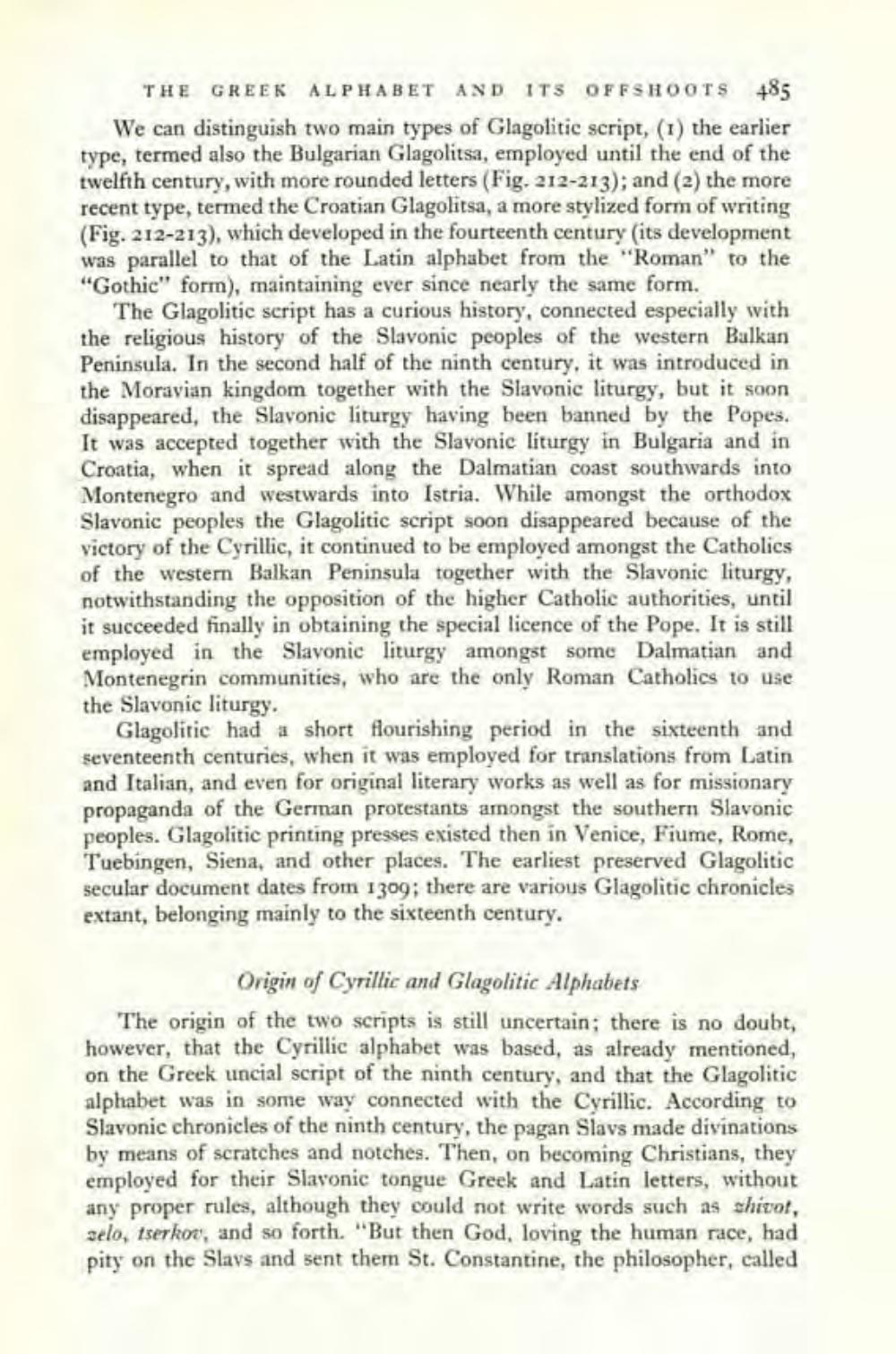________________
THE GREEK ALPHABET AND ITS OFFSHOOTS 485 We can distinguish two main types of Glagolitic script, (1) the earlier type, termed also the Bulgarian Glagolitsa, employed until the end of the twelfth century, with more rounded letters (Fig. 212-213), and (2) the more recent type, termed the Croatian Glagolitsa, a more stylized form of writing (Fig. 212-213), which developed in the fourteenth century its development was parallel to that of the Latin alphabet from the "Roman" to the "Gothic" form), maintaining ever since nearly the same form.
The Glagolitic script has a curious history, connected especially with the religious history of the Slavonic peoples of the western Balkan Peninsula. In the second half of the ninth century, it was introduced in the Moravian kingdom together with the Slavonic liturgy, but it soon disappeared, the Slavonic liturgy having been banned by the Popes. It was accepted together with the Slavonic liturgy in Bulgaria and in Croatia, when it spread along the Dalmatian coast southwards into Montenegro and westwards into Istria. While amongst the orthodox Slavonic peoples the Glagolitic script soon disappeared because of the victory of the Cyrillic, it continued to be employed amongst the Catholics of the western Balkan Peninsula together with the Slavonic liturgy, notwithstanding the opposition of the higher Catholic authorities, until it succeeded finally in obtaining the special licence of the Pope. It is still employed in the Slavonic liturgy amongst some Dalmatian and Montenegrin communities, who are the only Roman Catholics to use the Slavonic liturgy.
Glagolitic had a short flourishing period in the sixteenth and seventeenth centuries, when it was employed for translations from Latin and Italian, and even for original literary works as well as for missionary propaganda of the German prorestants amongst the southern Slavonic peoples. Glagolitic printing presses existed then in Venice, Fiume, Rome, Tuebingen, Siena, and other places. The earliest preserved Glagolitic secular document dates from 1309; there are various Glagolitic chronicles extant, belonging mainly to the sixteenth century.
Origin of Cyrillic and Glagolitic Alphabets The origin of the two scripts is still uncertain; there is no doubt, however, that the Cyrillic alphabet was based, as already mentioned, on the Greek uncial script of the ninth century, and that the Glagolitic alphabet was in some way connected with the Cyrillic. According to Slavonic chronicles of the ninth century, the pagan Slavs made divinations by means of scratches and notches. Then. on becoming Christians, they employed for their Slavonic tongue Greek and Latin letters, without any proper rules, although they could not write words such as chicot, selo, tserkos, and so forth. "But then God, loving the human race, had pity on the Slavs and sent them St. Constantine, the philosopher, called




